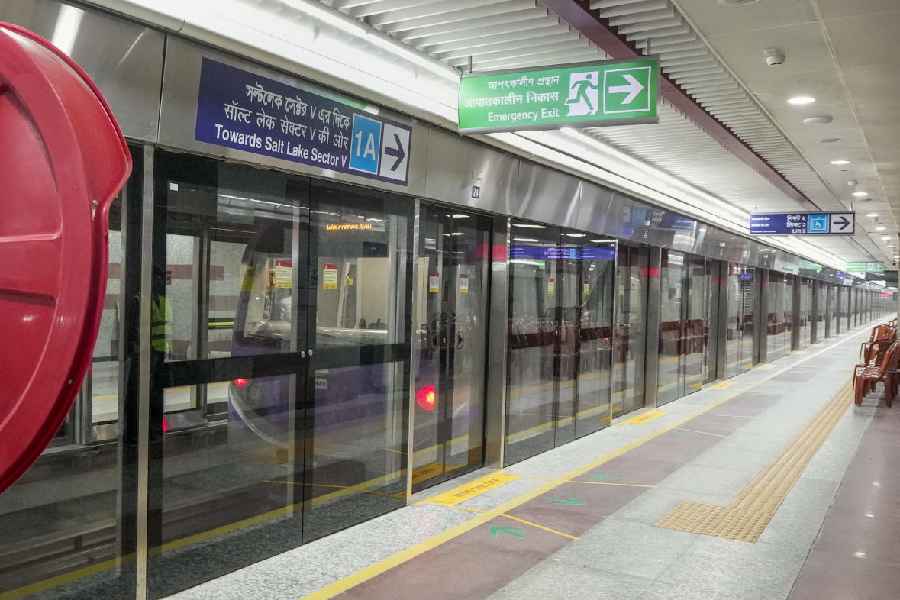In a world dominated by global animation giants, Indian animation is gradually carving a niche, with filmmakers like Kolkata-born Debjyoti Saha leading the charge. Founder of the Mumbai-based independent studio Goppo Animation, Debjyoti has been making waves in the animation industry with his viral music videos for rappers DIVINE and Prabh Deep, and most recently, the Indian folk metal band Bloodywood.
Back in 2022, Goppo Animation got its first big break with the title song sequence of Taapsee Pannu and Tahir Raj Bhasin’s Netflix film Looop Lapeta, and they never looked back. In a chat with The Telegraph Online, Debjyoti shared how growing up in Kolkata shaped his love for 2D animation and what the future holds for Indian animators.
How did your journey as an animation director begin and what led to the creation of Goppo Animation?
To be fair, in the 12 years invested in this art form, I've only been officially directing since 2020. My love for direction began small and with music. It started with creating album art and then small animated loops. Gradually, it grew into full-fledged animated music videos over time. My independent studio, Goppo Animation, was officially founded in June 2022 in Mumbai. It began as a way to express ourselves and tell our stories bravely through animation. Our work spans short films, music videos, title sequences, feature work and series, with a focus on hand-drawn frame-by-frame 2D animation—we are in love with the medium and its language of storytelling.
The name ‘Goppo’ comes from the Bengali word which means ‘stories.’ How does it reflect your studio's mission? How did growing up in Kolkata influence your creative journey and your love for animation?
Kolkata, where I’ve spent most of my life, has been a major source of inspiration for me. I developed a keen interest in art at an early age from my father, who would paint as a hobby. Not that I was great at it, but I was naturally persistent because what I was getting into genuinely piqued my curiosity. The city is a melting pot of people, culture, food, art, music and stories that surround them and this has had a significant impact on how I view the world and the kind of stories I want to tell through this art form.
You have worked with rappers like DIVINE, Hanumankind and Prabh Deep. Have you always been drawn to animation that intersects with music and cultural storytelling?
Music, especially hip-hop, has been an integral part of my life growing up. Our aim to be honest storytellers led us to this intersection of music, stories, and animation, and becoming a part of pop culture in our own way. It’s fascinating to be able to work on a piece of art in a completely different domain such as music and introduce our vision to the projects, thereby being a part of this artistic culture of honest audio-visual collaboration, which I am grateful for.
What was your first reaction when you were approached to animate the music video for Bloodywood’s Bekhauf?
Honestly, we were absolutely delighted. These kinds of collaborations are often sparse and hence, special. Bekhauf is a trilingual heavy-metal song and a beautiful collaboration between stories, culture and music from India and Japan. To be a part of this journey and create something special together has been exciting to say the least. We were absolutely blown away by the song and we just wanted to have a lot of fun in the process of creating this music video.
What was the inspiration behind the visual style of the animation?
The core idea of Bekhauf was about overcoming fear and fighting internal demons to emerge victorious. The video follows the band members of Bloodywood and Babymetal venturing into Hell—or Naraka in Indian mythology, Jigoku in Japanese—facing their darkest fears and overcoming them by joining forces.
The visual style celebrates the richness of Indian and Japanese cultures, both deeply rooted in mythology and connected through Buddhism. It’s also a tribute to many anime inspirations from my own childhood like Dragonball Z, Akira, Inu Yasha, and Hayao Miyazaki’s films, as well as Ram Mohan's Ramayan, the first Indo-Japanese animated feature.
You also recently collaborated with DIVINE and Karan Aujla for the music video of their latest track Hisaab. What was the inspiration behind the video and how did you execute it?
Hisaab was our second collaboration with DIVINE after his 2022 hit Mera Bhai, and we couldn't have been happier with Karan Aujla’s feature in the song. It was a barrier-breaking project for Indian hip hop, blending Punjabi and Hindi languages. Through the music video, we addressed mental health, highlighting how we often become prisoners of our thoughts and how the cycle never breaks until we reach out ourselves. At Goppo, we’re grateful to have been part of this journey. Personally, I’m moved by how these artists trust another artist in a completely different domain, thus embodying the essence of true collaboration.
What do you think is the future of animation in India? How is Goppo aiming to increase the appeal of animated films in the country?
The future is now. India has a fraternity of incredible talent and a supportive community that provides a safe space for storytellers to share their stories bravely. What we are anticipating is not a sudden burst of excellence, but if everything falls into place, we will be noticing a bombardment of excellence in Indian animation —across shorts, features, music videos, and series. And it's about time! An Indian New Wave is on the rise.
Tell us about your upcoming projects
Apart from commercial projects that we thoroughly enjoy working on, we are also focussing on the development of a few in-house projects. Our upcoming work Chiryakhana, a short film set in Kolkata, directed by me, is set to be finished in 2025. It is very different from the kind of work we usually do and we are completely invested at every step of the journey.











